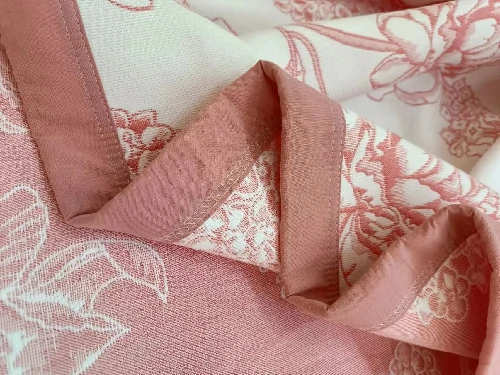For digital textile printers, the quality of their prints is paramount to satisfying customers. To achieve the desired level of quality using digital textile printing machines, the right type of ink is essential.

Reactive printing In Digital Textile Printing
Reactive printings are highly versatile and can be used to print on various natural fibers, with cotton being the most significant. Additionally, reactive inks can also be used on silk, wool, and viscose.
These inks are called “reactive” because the dye reacts with the chemicals in the printing paste during conventional printing. The chemical reaction that occurs when textiles are steamed ensures that the color molecules bond to the fiber.
In addition to their flexibility, there are two key advantages to using reactive inks. Firstly, they produce high-quality colors, particularly when printing on cotton or viscose. Secondly, they offer excellent wash fastness, which is crucial for top-level fashion brands as it means that the textiles can be washed regularly without losing their color.

Main 3 Types Of Reactive Printing
Twill reactive printing
High count and high density twill combed extra-wide fabric, reactive printing and dyeing process.
Jacquard reactive printing
Jacquard pattern formed by warp and weft weave changes in jacquard fabric weaving has fine yarn count and extremely high requirements for raw cotton. The bedding made by this kind of technology has a strong three-dimensional effect, looks more vivid, fresh and higher in grade, and feels quite soft, not pilling or fading, which makes your room more warm and romantic and adds a bit of comfort and comfort to your home life. Absolute full-activity printing and dyeing will not fade and pilling.
Small jacquard reactive printing
Satin Jacquard+Reactive Printing: Because it is made of 100% combed cotton and authentic 133*72 high-density fabric, it is particularly soft in hand feel; Full-active printing and dyeing will not fade and pilling; Exquisite printed twill pattern and fine workmanship.
Therefore, it is called small jacquard fabric because the front of quilt cover is jacquard technology and the back is printing technology. Compared with the general reactive printing and dyeing, the technology is improved, and the comfort and feel of the fabric are higher.
Why Reactive Inks Are A Suitable Choice For Digital Textile Printing?
Firstly, reactive inks are highly favored among digital textile printers and were the first type of ink developed for this purpose. This is due to their small molecule size, which makes it easier for droplets of ink to pass through inkjet nozzles.
Subsequently, reactive inks are particularly suitable for printing on natural fibers, such as cotton, which is widely used in the textile printing industry. Digital reactive inks enable digital textile printers to produce high-quality prints with excellent wash fastness.
The primary difference between reactive inks for digital printing and reactive printing paste for conventional printing lies in the application of the chemicals used to bind the color to the fabric. In conventional printing, these chemicals are part of the printing paste, but their thick consistency and large molecules prevent them from being sprayed through an inkjet nozzle to achieve sufficient resolution and detail. Instead, these chemicals are applied separately in a pre-treatment process prior to printing.
